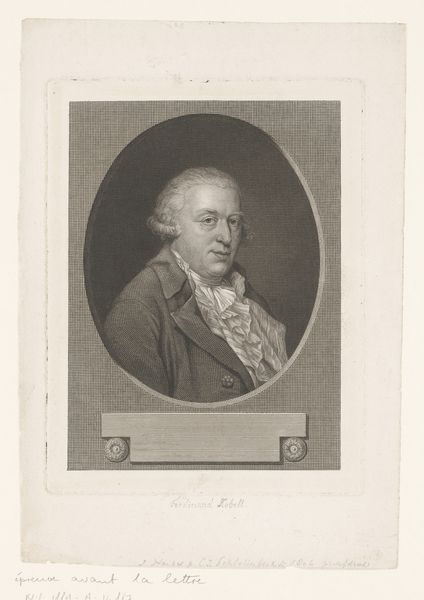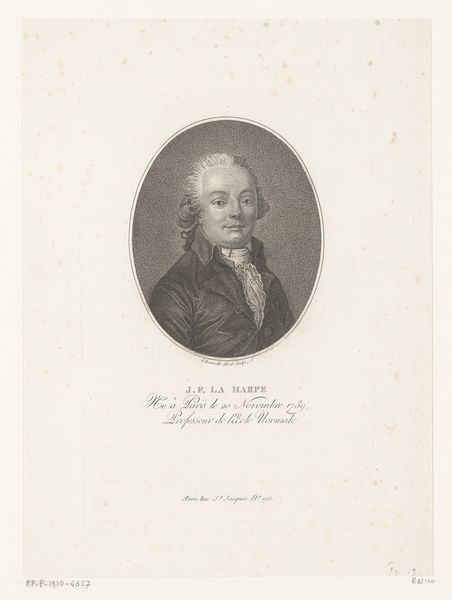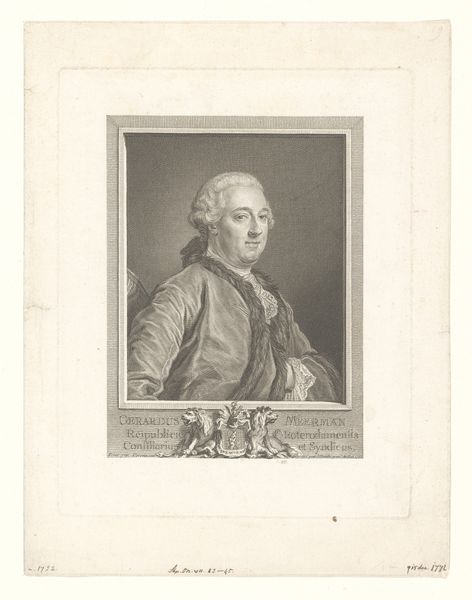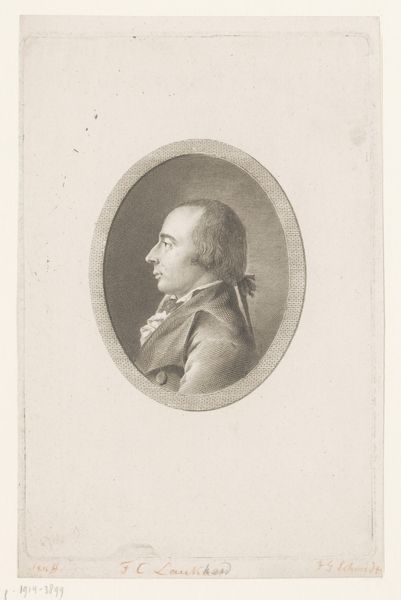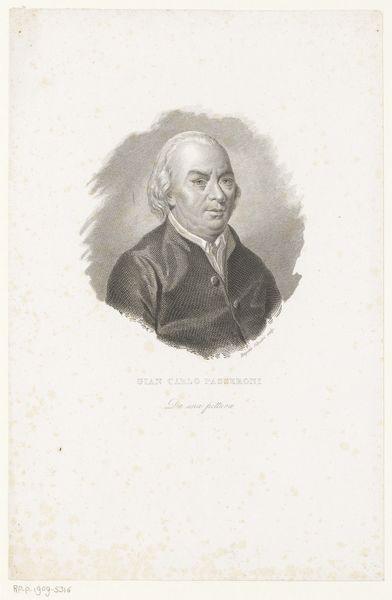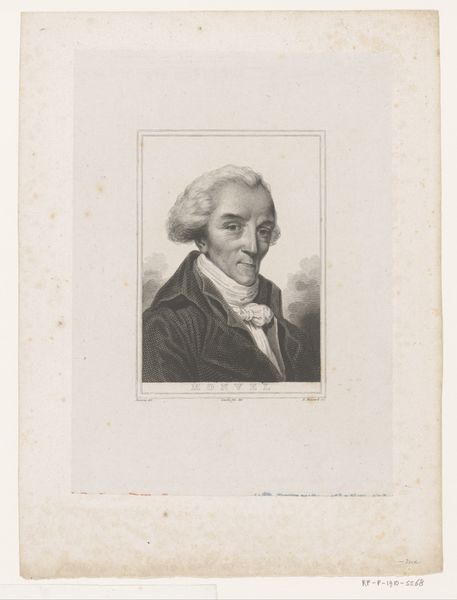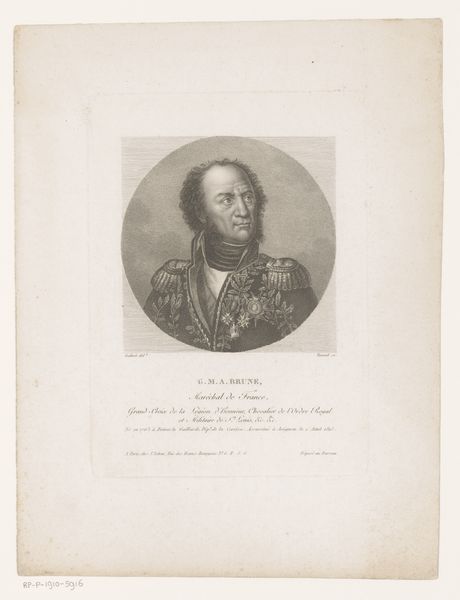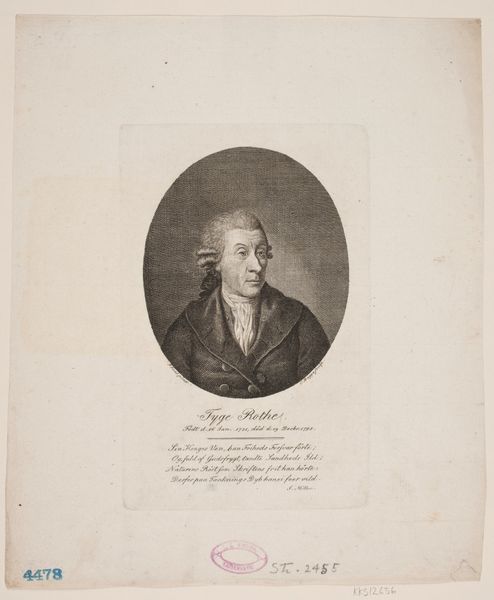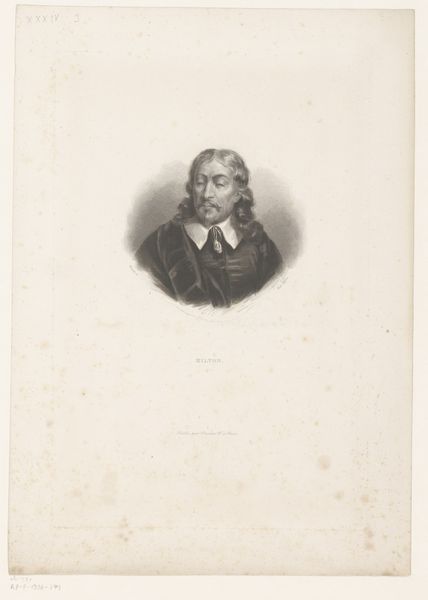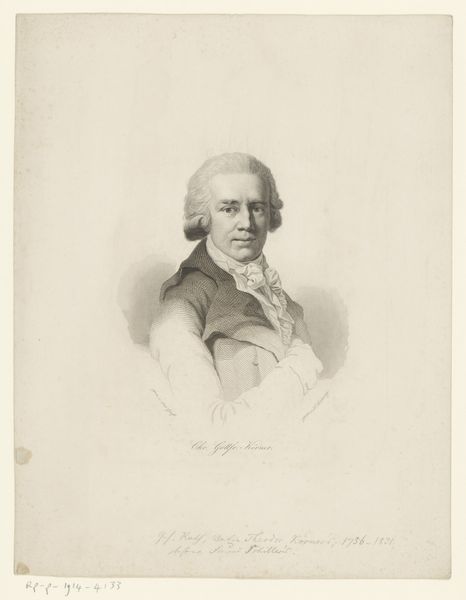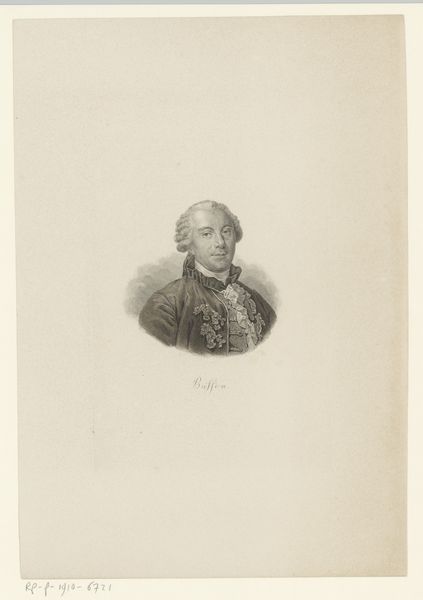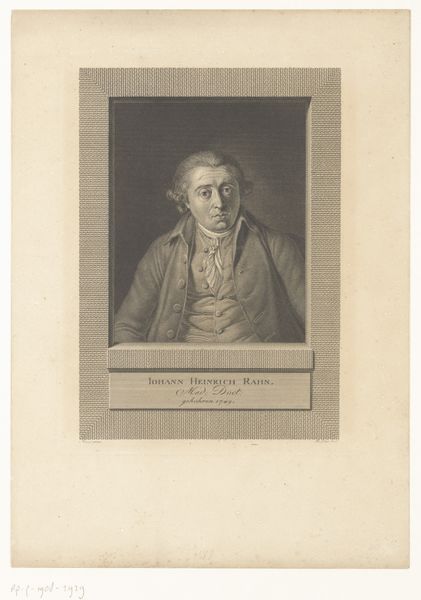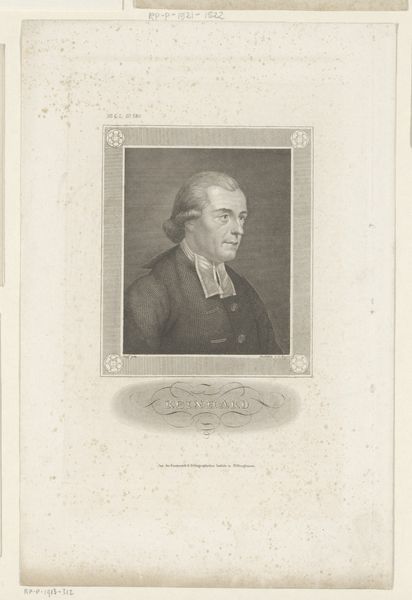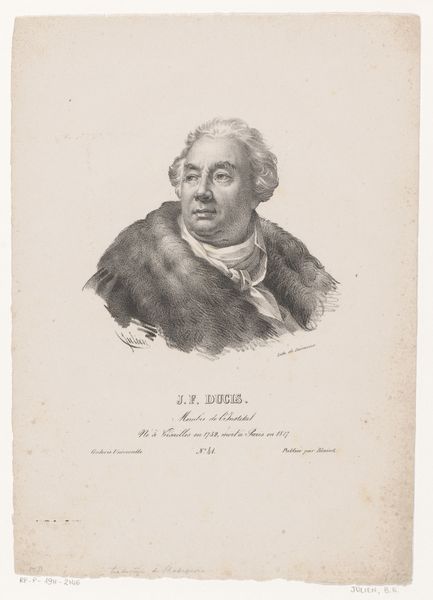
print, engraving
#
portrait
#
pencil drawn
#
neoclacissism
#
light pencil work
# print
#
pencil sketch
#
old engraving style
#
portrait reference
#
pencil drawing
#
pencil work
#
history-painting
#
engraving
Dimensions: height 304 mm, width 229 mm
Copyright: Rijks Museum: Open Domain
Curator: Immediately striking, isn't it? Adam von Bartsch's 1794 portrait, "Portret van Johann Knesevich von Szent-Helena," is a remarkable study in neoclassicism and restraint. Editor: It feels so... fragile. Look at that light pencil work! It is an engraving of course, but the image seems almost ephemeral. Curator: Absolutely. The fragility resonates deeply when considering the sitter, Johann Knesevich, a military figure during a tumultuous period. This wasn't simply about aesthetics; the neoclassicist style sought to evoke virtues of duty and civic responsibility in times of radical change. Think of the Enlightenment ideals clashing against aristocracy. Editor: And Bartsch himself, positioning him within the context of printmaking's role then... how does that complicate our understanding of power and patronage? Was he making multiples for distribution? The accessibility of printed images is key to their social impact, even with elite subjects. The medium and message are very interesting together here. Curator: Precisely! This engraving potentially reached a broader audience, subtly shaping perceptions of military leadership and status at a time when those concepts were being intensely debated and redefined in connection with class structure. It prompts reflections about social upheaval. Consider the layers here—a portrait within a military context, disseminated through the material process of printmaking, carrying ideological weight within shifting power dynamics. Editor: You've really framed the narrative. It's the labor of etching, of repeated impressions, which lends it meaning, a way of shaping opinions but also generating a livelihood, like so many other artisans in the pre-industrial age. The raw materials, tools, time involved, reflect this broader reality. It’s not just some rarefied object. Curator: Right. I'd also add to keep in mind how it can prompt considerations of how we build our contemporary value system in regards to identity. These portraits are products of labor too and tell a wider social story than that of just the sitter themselves. Editor: Agreed. And seeing the social stories told by everyday artistic materials in artworks such as this one opens possibilities in my way of thinking too!
Comments
No comments
Be the first to comment and join the conversation on the ultimate creative platform.
